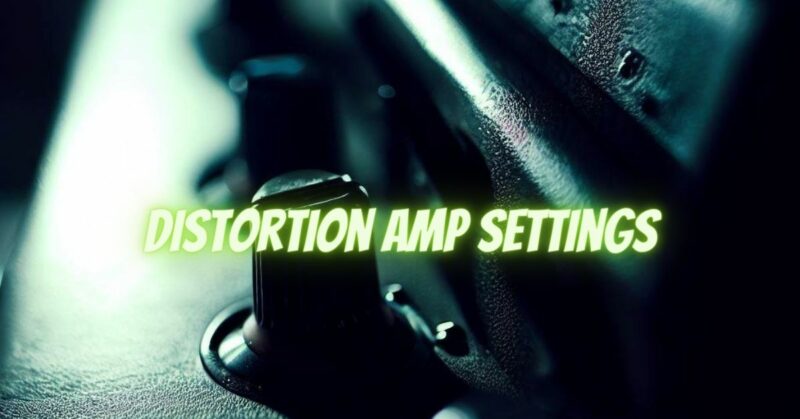Distortion is the backbone of many genres, from rock and metal to punk and beyond. To harness the raw power and aggression of a distortion guitar tone, dialing in the right amp settings is crucial. In this article, we’ll dive into the realm of distortion and explore the best amp settings to help you unleash a sonic assault that will captivate audiences and elevate your playing to new heights.
- Start with a Clean Slate:
Begin by setting all the controls on your amp to a neutral or flat position. This provides a clean canvas to work with and ensures that any existing settings don’t interfere with your distortion tone. Set the EQ controls (bass, midrange, and treble) to the midpoint or 12 o’clock position.
- Crank Up the Gain:
The gain control is the heart of your distortion tone. Dial it up to add intensity, sustain, and grit to your sound. Experiment with different levels of gain to find the sweet spot that matches your desired level of distortion. Higher gain settings deliver a more saturated and aggressive tone, while lower gain settings offer a crunchier and more dynamic sound.
- Fine-tune the EQ:
Sculpting the EQ controls is essential for shaping your distortion tone. Here’s a general guideline to get you started:
- Bass: Boosting the bass control adds weight and thickness to your tone, providing a solid foundation for heavy riffs. However, be cautious not to overpower the mix with excessive bass, as it can result in a muddy or boomy sound. Adjust the bass to find the right balance that maintains clarity and punch.
- Midrange: The midrange control is crucial for cutting through the mix and adding definition to your distorted tone. Increase the midrange to enhance presence and aggression, allowing your guitar to stand out in the band context. Experiment with different midrange levels to find the perfect balance between bite and smoothness.
- Treble: The treble control adds brightness and clarity to your distortion tone. Increase the treble to add bite and articulation, ensuring your guitar’s notes cut through the mix with precision. Be careful not to overdo it, as excessive treble can lead to harshness or piercing tones. Find the right balance to achieve a clear and balanced sound.
- Consider Presence and Resonance:
If your amp has presence and resonance controls, these can further shape your distortion tone. The presence control adjusts the high-frequency response, allowing you to add shimmer and definition. Increase it slightly for added clarity and sparkle, or back it off for a warmer and smoother tone. The resonance control adjusts the low-end response, providing control over the tightness and depth of your tone. Experiment with resonance to find the ideal balance that suits your playing style and the character of your guitar.
- Experiment with Pedals:
Distortion pedals can be a valuable addition to your setup, allowing for further customization and tonal shaping. Experiment with different distortion pedals to find one that complements your amp’s natural distortion. Some pedals offer additional tone-shaping options, such as EQ controls or different clipping options, allowing you to fine-tune your distortion sound to perfection.
- Volume and Dynamics:
The volume control on your amp not only affects the overall loudness but also plays a crucial role in shaping the dynamics of your distorted tone. Higher volumes often result in more natural tube saturation and a more responsive feel. Experiment with different volume levels to find the sweet spot that suits your playing style and the intensity you desire.
Conclusion:
Distortion is the gateway to sonic mayhem, allowing your guitar to scream, growl, and unleash a powerful assault. By cranking up the gain, fine-tuning the EQ, considering presence and resonance, experimenting with pedals, and mastering volume and dynamics, you’ll be able to dial in the perfect distortion guitar amp settings that resonate with your musical style and inspire a new level of creativity. Strap in, unleash the fury, and let your guitar roar with the power of distortion!


